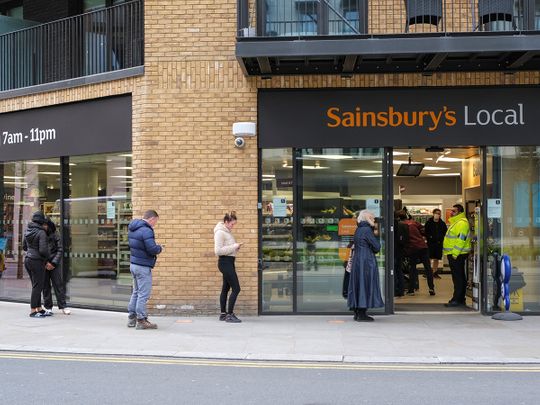
US, Italy, Germany, Spain and France.
Those are the few spots of sunshine amid the global gloom — where hope seems to be gaining the upper hand in the all-out war against COVID-19.
Despite coronavirus ravaging the countries above, despite hundreds of deaths every day, these are the places where health officials have noted that the number of patients in intensive care units have dropped in the past few days, offering a glimmer of hope that the surge in critical care hospitalisations might be levelling off.
But what happens from here onwards in these countries will go a long way in determining how and when humanity will ultimately prevail over the virus.
For the countries that are planning the transition out of stay-at-home restrictions which have placed around half of humanity under some form of lockdown, it is critical to remember that doing so too quickly could prove to be lethal
New York, for certain, is still the current epicentre of the outbreak not only in the US but around the world.
The statistical forecast for the US is grim: US President Donald Trump predicted between 100,000 to 240,000 deaths in the US alone by August if urgent measures are not adopted to stem the surge.
It is for this precise reason that the World Health Organisation has warned countries to be cautious about lifting restrictions — in some cases seen as severe and draconian — introduced to curb the spread of the coronavirus.
According to WHO chief Tedros Adhanom Ghebreyesus, any premature lifting of restrictions imposed to control the pandemic could lead to a fatal resurgence of COVID-19.
Of course, there has been a welcome slowing of the pandemic in key European countries such as Italy, Germany, Spain and France.
China is looking to gradually reopen some industrial cities as the virus abates. But there’s been an alarming acceleration in several other countries — including community transmission in 16 countries of Africa.
Singapore — which became a role model in curbing the virus in the initial days — is now faced with a deadly second wave.
For the countries that are planning the transition out of stay-at-home restrictions which have placed around half of humanity under some form of lockdown, it is critical to remember that doing so too quickly could prove to be lethal.
The key measures to adopt before lifting any restrictions are to bring community transmission under full control, make sufficient public health care services available and continue to impose preventive measures in workplaces and schools.
So let’s keep doing more of what we are doing.
Stay home — because that works. Let’s follow government guidelines and community rules. Let’s wash hands, wear masks and gloves when going out and practice respiratory hygiene.
These simple disciplines will ultimately help flatten the curve. At your home, in your community and country, around the world.
We will win the war against coronavirus — but let’s not rush to celebrate. Not yet.







